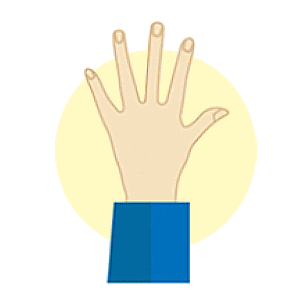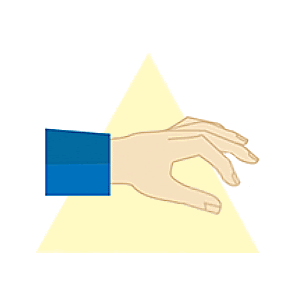Hit ENTER to search or ESC to close



After a stroke or brain injury, a recovering patient’s brain may struggle to control the signals sent throughout the body. This can cause their muscles to become overactive and remain tense for long periods of time – causing spasticity.
Muscle spasticity affects about 1 in 3 stroke survivors and can occur any time after a stroke. It can make it difficult for a part of the body to function properly especially if it requires fine motor control, such as using your hands. Let’s take a look at the characteristics of hand spasticity and how you can reduce them through rehabilitation.

Hand spasticity can interfere with many aspects of your daily life. It can make performing even basic tasks difficult, be it eating, drinking, or holding anything.
In milder cases, a patient’s hands can feel stiff or sore and difficult to control once the spasms start.
In severe cases, the tightening of the muscles makes it difficult for them to extend their fingers fully, resulting in a clenched fist which can be painful.
If this is left untreated, the muscles and joints could be permanently locked in position and greatly limit one’s range of movement.

Thankfully, there are some ways to manage hand spasticity. Generally, your physical therapist will suggest performing some basic hand movements to improve your strength, range of motion and fine control.
Some of these exercises include:
Flexibility & Mobility
Spread your fingers, then bring them together.
Repeat slowly for 10 times.

Strengthening
Open and close your fist repeatedly for 30
seconds.

Fine Control
Touch each of your fingertips with the tip of your
thumb.

These exercises will stimulate the brain and realign the brain’s understanding of the signals to your hands, reducing the frequency of the contractions.
It’s also important to keep practising them regularly as the repetition helps to strengthen the new connections formed between the brain, nerves and muscles.

Remember that each patient’s recovery is different, so some exercises may have more impact than others from person to person. Talking with a doctor and a physical therapist will help set up the exercise routine that best suits the patient’s needs.
Over time, this will allow the patient to slowly regain control of their hands and move forward with their rehabilitation.
Stroke Exercises Guide eBook
Get detailed information on stroke recovery exercises for different parts of the body with various intensities and customisations to suit your needs.

Give Feedback
Let us know if you found this useful and what topics you would like to see in the future so that we can provide more relevant content for you.
References:
1) Flint Rehab. (2021).
2) Saebo. (2017).
3) Stroke Foundation. (2022).
4) Zeng, H., et al. (2021). Prevalence and Risk Factors for Spasticity After Stroke: A Systematic Review and Meta-Analysis. Frontiers in neurology, 11, 616097. https://doi.org/10.3389/fneur.2020.616097
Website: Moleac.com
Contact: info@moleac.com
This document does not constitute the practice of medical consultation nor medical advice. Always seek the advice of your treating physician and/or specialist. if you suspect that you are experiencing symptoms of stroke, call for an ambulance immediately.
All Rights Reserved by Moleac Pte Ltd, Helios #09-08, 11 Biopolis Way, Singapore 138667